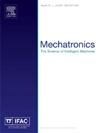由曲线段组成的永磁直线同步电机的磁等效电路建模
IF 3.1
3区 计算机科学
Q2 AUTOMATION & CONTROL SYSTEMS
引用次数: 0
摘要
本文推进了具有任意弯曲线段的永磁直线同步电机(PMLSM)的磁等效电路(MEC)建模。随着 PMLSM 在工业应用中的使用越来越多,精确且计算效率高的建模技术至关重要。本研究提出了一种满足这些要求的新方法,并为基于模型的实时控制、观测器和估计策略铺平了道路。现有的 PMLSM MEC 模型主要考虑直线定子段,忽略了现代 PMLSM 设计中常用的曲线段曲率的影响。本文提出的方法系统地将这些影响纳入 PMLSM 的 MEC 模型,以解决这一局限性。正如几个验证实验所证明的那样,基于测量的校准概念进一步提高了模型的准确性。最后,针对整个 PMLSM 设置有效实施所提出的 MEC 模型的方法与标准实施方法相比,大大减少了计算时间。本文章由计算机程序翻译,如有差异,请以英文原文为准。
Magnetic equivalent circuit modeling of a permanent magnet linear synchronous motor composed of curved segments
This paper advances magnetic equivalent circuit (MEC) modeling for permanent magnet linear synchronous motors (PMLSMs) with arbitrarily curved segments. As PMLSMs are increasingly utilized in industrial applications, accurate and computationally efficient modeling techniques are paramount. This research proposes a novel approach that meets these requirements and paves the way for real-time model-based control, observers, and estimation strategies. Existing MEC models for PMLSMs primarily consider straight stator segments, neglecting the impact of the curvature of curved segments commonly used in modern PMLSM designs. The approach proposed in this paper systematically incorporates these effects into the MEC model for PMLSMs to address this limitation. As demonstrated by several validation experiments, a calibration concept based on measurements further enhances the model’s accuracy. Finally, a method for efficiently implementing the proposed MEC model for a whole PMLSM setup significantly reduces the computation time compared to the standard implementation.
求助全文
通过发布文献求助,成功后即可免费获取论文全文。
去求助
来源期刊

Mechatronics
工程技术-工程:电子与电气
CiteScore
5.90
自引率
9.10%
发文量
0
审稿时长
109 days
期刊介绍:
Mechatronics is the synergistic combination of precision mechanical engineering, electronic control and systems thinking in the design of products and manufacturing processes. It relates to the design of systems, devices and products aimed at achieving an optimal balance between basic mechanical structure and its overall control. The purpose of this journal is to provide rapid publication of topical papers featuring practical developments in mechatronics. It will cover a wide range of application areas including consumer product design, instrumentation, manufacturing methods, computer integration and process and device control, and will attract a readership from across the industrial and academic research spectrum. Particular importance will be attached to aspects of innovation in mechatronics design philosophy which illustrate the benefits obtainable by an a priori integration of functionality with embedded microprocessor control. A major item will be the design of machines, devices and systems possessing a degree of computer based intelligence. The journal seeks to publish research progress in this field with an emphasis on the applied rather than the theoretical. It will also serve the dual role of bringing greater recognition to this important area of engineering.
 求助内容:
求助内容: 应助结果提醒方式:
应助结果提醒方式:


